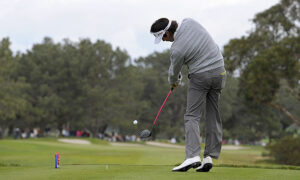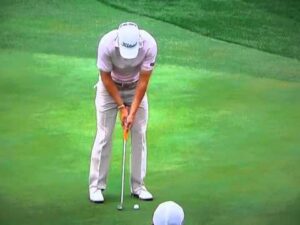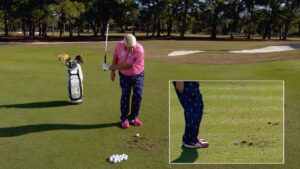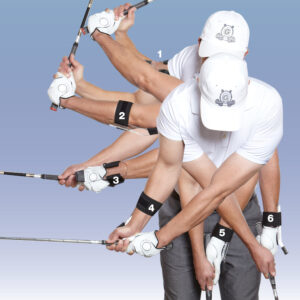What’s the most important component of the swing: speed, technique or tempo? You need to think about this in order to place your emphasis in the area where you will get the most benefit.
SPEED
Most recreational golfers work on SWING SPEED FOR DISTANCE. Hank Haney reminds us that we can gain 2.5 yards in distance for every mile per hour in swing speed. Unfortunately swing speed is the WORST CHOICE. Keeping the ball in the fairway and learning to consistently hit or putt the ball will save you more strokes than swing speed and a few more yards on your drive.
Swinging faster may give you 10 or 20 yards more but those yards are more likely to be deeper in the rough. I guarantee that your next shot out of the rough will hurt your chances of hitting the green in regulation a lot more than a longer drive will benefit you. Killer speed will kill your game. It sure does kill my game when I go for the gusto.
TECHNIQUE
About a year ago I saw a series of blogs which promised great success if you blank out your mind, forget about technique and just swing to create success. [NOTE: These ads stopped running long ago.] I decided to improve on this opportunity by working with a specialist in relaxation and hypnotism. We agreed that I had a good understanding of the swing technique and it was time to let my subliminal mind take over.
I was expecting to lower my golf scores by swinging with a relaxed frame of mind. After a month of effort I realized that success in golf is the culmination of many components. A relaxed frame of mind will not help you cope with an uphill, downhill or sloped lie. It will not help with swing speed for the right distance adjustment. Golf is a game of concentration and focus. You also need to adjust for your weather environment, hitting & landing surface and your club selection to deal with every situation. Without focus your technique is useless.
TEMPO
Golf needs an intense swing to create distance but tempo and timing is the real key for success. Developing a straight arm backswing while practicing with GOLFSTR+ can be a real break-through for more consistent hits but your scores will really started to drop when you learned to control your tempo.
According to Hank Haney’s study, the time for your back swing to your forward swing should be about a 3 to 1 ratio. Unfortunately, if your transition starts with your arms casting over the top, your swing will result in limited power, many mishits and more slices.
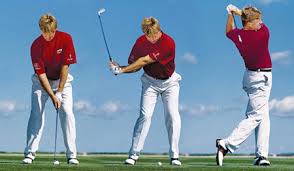
Ernie Els is a great image to keep in your mind when you think about a smooth transition and acceleration through the ball.
Tempo is all about timing. Start your transition by pressing your hip forward and dropping your arms as you accelerate your wrists through impact (like snapping a whip). Release your hips, shoulders, arms and wrists in that order. Try to visualize the shifting of your body to transfer power through the ball. Using your driver you should be swinging up through the ball. Using your irons you should be focused on the forward press of your hips to ensure that you bottom out with the ground after you smash the ball.
Last week CBS Sports golf analyst Peter Kostis showed a slow motion comparison of Tiger on the practice tee and on the golf course. He said that it was clear that “tension and tempo” were the culprits causing Tigers poor results on the golf course. A faster swing speed (back and forward) with a greater head drop were not helping Tiger’s results.
Too much speed will kill your control. Technique should be sorted out during your setup to cope with the conditions. Most important, you need a smooth tempo for amazing power and consistency. GOLFSTR+ will help your get there. Buy it today at www.golfstr.com



